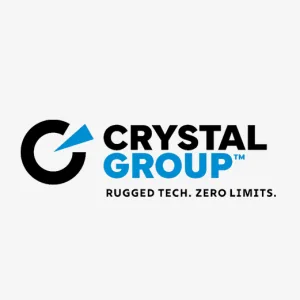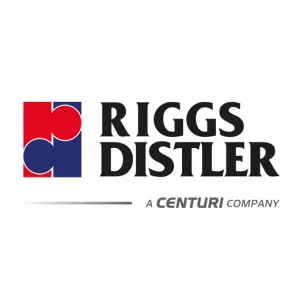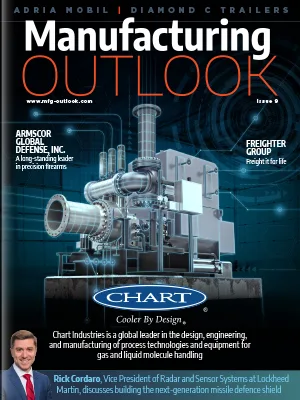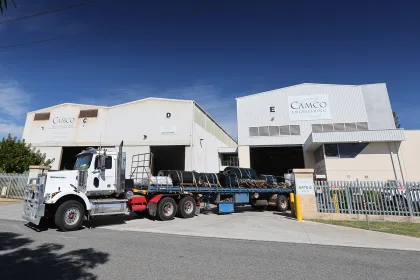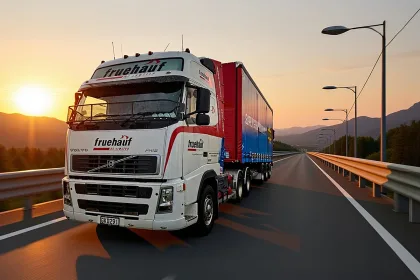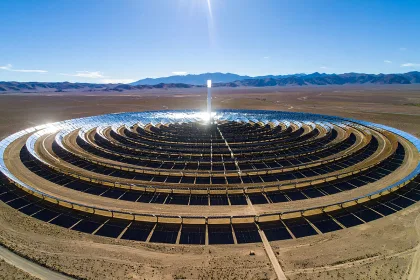Specializing in defensive technology, solving complex challenges, and advancing scientific discovery while delivering innovative solutions that keep people safe, Lockheed Martin is an unparalleled global security and aerospace company. Rick Cordaro, Vice President of Radar and Sensor Systems, tells us more.
BUILDING THE NEXT-GENERATION MISSILE DEFENSE SHIELD
Established over 100 years ago in 1912, Lockheed Martin has had innovation as its beating heart and purpose as its soul since its humble inception.
This unrelenting vision and unwavering dedication have enabled the industry-defining company to expand leaps and bounds into the international juggernaut it is today, proudly working to make the world a better place through technology.
Currently, the company works across a multitude of business areas, including Aeronautics, Missiles and Fire Control, Rotary and Mission Systems, and Space.
“Lockheed Martin is a 21st-century security company, meaning we provide security and deterrence for all our warfighters, whether they’re at home or our closest allies,” introduces Rick Cordaro, Vice President of Radar and Sensors Systems.
This is accomplished through various products, services, and capabilities – such as hardware like aircraft and radars, software like command and control systems, or all the software that rides on top of the hardware.
“It’s truly a global company, and what makes it global is not only the customers we serve but the partners we have across the world. We work with a vast network of suppliers and teammates who help us and our customers deliver every single day,” asserts Cordaro.
The broader defense and manufacturing industry is currently in a particularly exciting yet challenging place, driven by global demand. This is due to the current global dynamics and the emergence of near-peer threats, which have significant implications for US manufacturing.
“There are a lot of challenges, but US ingenuity has always shone through and delivered; that is what we’re going to do here, not just because it’s in our backyard, but because we have to,” details Cordaro.
To meet their needs, the company is digitally transforming its operations throughout the design and production process, ensuring the greatest efficiency without sacrificing quality.
“It’s imperative that we maintain the safety and security of our nation, and that’s more than just military strength – it’s the industrial base that backs it up.”
21ST-CENTURY SECURITY
The 21st-century security environment is incredibly complex. Threats move fast, and adversaries are well-equipped and well-connected. Success depends on dominance in all domains.
Lockheed Martin has diligently remained at the forefront of threat detection throughout its history, becoming the trusted partner for armed forces across the world.
The company has maintained its unparalleled position due to its cutting-edge innovation and passion toward helping US and allied forces strengthen global security.
“Our mission is deterrence as part of 21st-century security solutions. Our goal is to ensure that our nation, partners, and customers are ahead of ready,” denotes Cordaro.
“Yesterday’s approach isn’t good enough for today’s demands. Modern forces need a Mission Integrator – a way to unite platforms, networks, and people to deliver on a mission need, even when staring down a sophisticated and determined adversary.”
Lockheed Martin does this by working with warfighters and customers to truly understand what they need in order to achieve success. It’s not just about bringing something out of a catalogue to a customer – it’s about understanding their unique requirements, where they are today, where they need to be in the future, and what their mission will look like.
The company relies on its talented team members who specialize in different products and services, including how products are made, designed, and built.
“We also have a lot of incredible people, many of whom are veterans who understand how these systems get employed and what these capabilities must perform in battle,” insights Cordaro.
“That is really how we do it – by understanding what our customers’ missions are and how that translates into requirements for what our products need to do.”
This unrelenting vision allows Lockheed Martin to confidently take on challenges that others may deem impossible, thus elevating the company to global market leadership status.
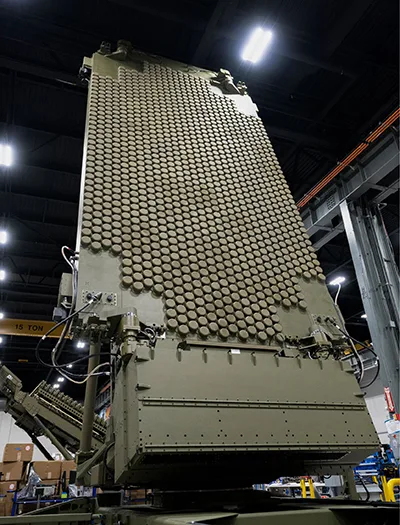
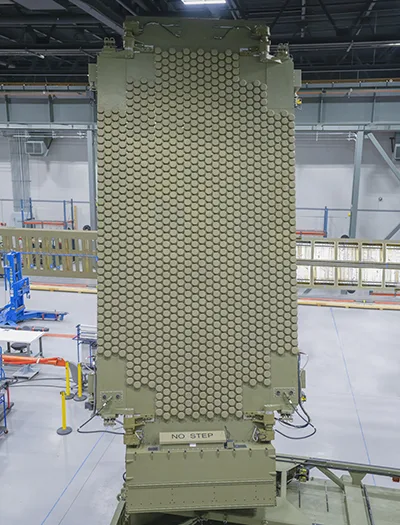
DETERRENCE BEGINS WITH DETECTION
Deterrence begins with detection is not only a phrase, but a mindset that remains at the forefront of the company’s daily operations.
“You can’t defend what you can’t see. If you have the opportunity to see the threats, you can protect against them,” expands Cordaro.
“Hence, deterrence begins with detection is our tagline because what we build are tools that help our warfighters detect.”
A prime example of this motto is Lockheed Martin’s long-range detection systems, such as the Long Range Discrimination Radar (LRDR), which can see thousands of miles away and distinguish between a lethal re-entry vehicle and a benign piece of debris.
LRDR is a vital component of the Missile Defense Agency’s (MDA) strategy to protect the US from ballistic missile attack. As a long-range radar that provides precision metric data to improve ballistic defense discrimination, the LRDR keeps pace with evolving ballistic missile threats and increases the effectiveness of ground-based interceptors.
“We have long-range surveillance radars like the TPY-4, which can see aircraft and unmanned aerial vehicles (UAVs) coming in at low altitudes and high speeds. As you get closer, we have systems like the Sentinel A4 and TPQ-53, which are missile and air defense systems. Then you have counter target acquisition radars that allow you to see rockets, artillery, mortars, cruise missiles, and UAVs,” insights Cordaro.
All of these radars enable warfighters to accurately and precisely determine which action to take next.
Additionally, the company has systems such as the APY-9, which is the radar that rides on the US Navy’s E-2D Advanced Hawkeye, acting as the eyes of the fleet.
“When you think about protecting an aircraft carrier, you’re protecting a big floating city. To do that, you need forward-deployed assets. The APY-9 can provide thousands of square kilometers of coverage, ensuring the ship’s billions of dollars of assets have time to react when threats are inbound,” explains Cordaro.
AT THE FOREFRONT OF THREAT DETECTION
As a layered defense shield safeguarding the US and its territories with unwavering precision and ensuring the security and resilience of the nation, Golden Dome is revolutionizing US homeland missile defense.
The Department of Defense’s (DoD) Golden Dome for America strategy aims to preserve peace through strength, deterring adversaries and defending the country from a growing array of aerial threats.
“Golden Dome is a really exciting initiative because it’s something our nation has needed for the longest time, and the current missile defense system is getting us to that capability,” details Cordaro.
“It is a key enabler and element, and we’re going to build upon these proven and capable systems as we collaborate with innovators across all sectors.”
Lockheed Martin is also working alongside its customers, including the MDA, Space Force, USNORTHCOM, and others, as this mission of unprecedented scale requires a whole-of-industry approach.
“We’re bringing together what we have to offer with our supply chain and the best of commercial technology to create an open architecture that allows everyone to contribute. This will spur not only the defense of the homeland but also innovation and economic growth to strengthen the manufacturing sector,” continues Cordaro.
He notes the importance of government recognizing the need for this vision to quickly become a reality, which aligns with Lockheed Martin’s strategy of being ahead of ready.
Golden Dome is a revolutionary concept as this next-generation defense shield will identify incoming projectiles, calculate trajectories, and deploy interceptor missiles to destroy them mid-flight, safeguarding the nation and projecting the strength of the US.
These radar technologies see further, sharper, and sooner, making them the first and most critical layer of national defense. Lockheed Martin’s proven capabilities are ready to be deployed now.
“Most importantly to me, the radars provide detection that leads to deterrence, like the LRDR in Alaska, the TPY-6 deployed in Guam, the Sentinel A4 for the US Army, and the TPY-4 that’s in the hands of the US Air Force and other international partners today,” expands Cordaro.
By bringing the best and brightest of US innovation to rapidly develop game-changing technology, the nation’s Golden Dome will be sure to stay well ahead of threats.
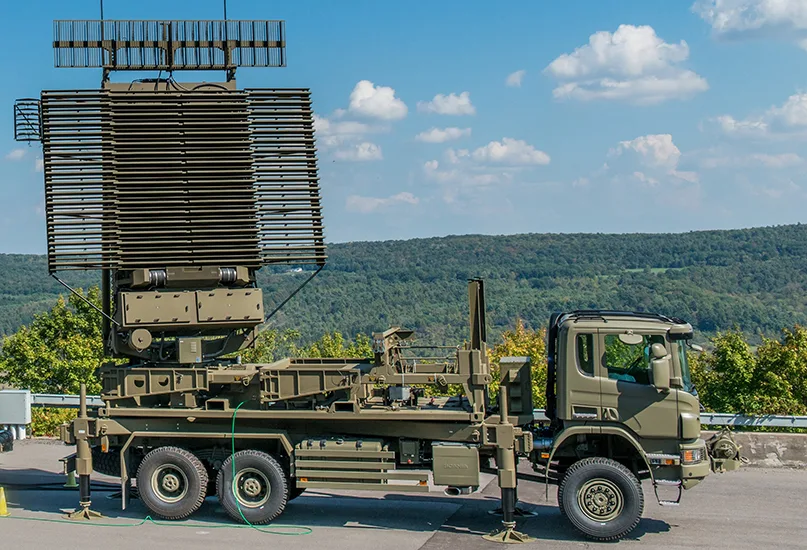
MISSION INTEGRATION
It has been proven time and again that Lockheed Martin’s radars and sensors are some of the most advanced in the world, working with existing critical defense networks to protect from adversarial threats.
The open architecture design of Lockheed Martin’s radars allows seamless integration with a variety of sensors and systems, providing a unified operational picture. This flexibility enables the system to quickly incorporate new capabilities and cutting-edge software, ensuring service members have the necessary tools to respond to emerging threats before they can adapt.
“A true Mission Integrator does more than just create technology – it accelerates outcomes and delivers a decisive advantage for real-world needs. And it does so quickly, speeding the timeline from emerging need to delivered capability. That’s key to strengthening deterrence and staying ahead of potential threats,” details Cordaro
Lockheed Martin is rising to the challenge of mission integration. Working shoulder-to-shoulder with forces around the world and experts across industries, the company is transforming the way defense tech is developed and delivered.
“We could talk a lot about the technology and how we use gallium nitride transistors, digital beamforming (DBF) for many of our radars, or how we have polarization diversity in a number of our systems,” insights Cordaro.
“All of those technical features contribute to the benefit of being able to see smaller targets at longer ranges in the face of challenging clutter, such as adverse weather, decoys, and chaff from adversaries.”
Deterrence may begin with detection, but it is just the first step in the kill chain to ensure accuracy and safety. Lockheed Martin has an edge because it is a leading command, control, and combat system developer and integrator.
“When I think about Golden Dome, I think about how Lockheed Martin is the DoD’s lead industry partner for the US missile defense system with the Command and Control Battle Management Communications (C2BMC) system and the US Navy’s lead integrator of the Aegis Combat System (ACS),” details Cordaro.
These systems are able to merge what is detected through radars and counter those threats through systems such as Terminal High Altitude Area Defense (THAAD), PAC-3, laser weapons, and high-power microwaves to bring forth warfighting capability as opposed to just widgets.
“It’s one thing to make widgets, but it’s another to make warfighting capabilities. That’s how we’re truly providing 21st-century security – not just through widgets or systems, but warfighting capabilities,” he asserts.
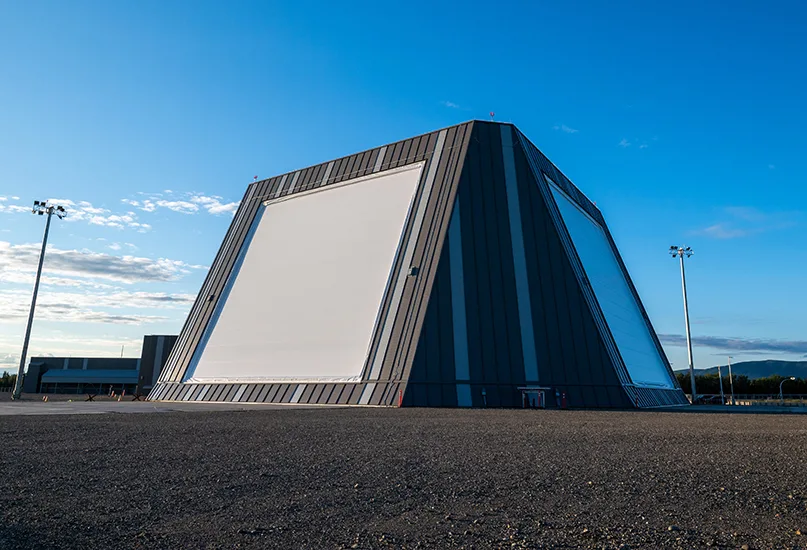
AHEAD OF READY
Lockheed Martin’s purpose is to ensure those it serves are always able to stay ahead of ready.
As an identity, culture, and promise, this mindset is paramount to the company’s ability to evolve to meet emerging threats, provide innovative solutions, and partner with customers to keep the US and allies safe at a moment’s notice.
“When the warfighter calls, they’re not asking for help in three years or even three months’ time – they need help now, and we do all the hard science, engineering, architecting, development, and mission analysis to know we can bring solutions that are ahead of ready by being ready now,” explains Cordaro.
An example of this is the LRDR, which was contracted several years ago and is currently deployed in Alaska, consisting of modern technology based on subarray suites.
Recently, the US government contacted Lockheed Martin to discuss an emerging need to defend Guam and place a new sensor on the island.
Within a period of less than two years, the company took the technology from the LRDR and built the TPY-6.
“The TPY-6 provides high-end detection, discrimination, and deterrence capability, and was derived from the same technology that we and the MDA have invested in for years to make the LRDR a reality,” furthers Cordaro.
“That’s what ahead of ready looks like. It doesn’t mean you can predict the future – it means you have the capability and technology warfighters can use and adapt to their mission when the need is real.”
READY NOW AND FOR THE FUTURE
Lockheed Martin proudly exhibits numerous industry-defining products and initiatives that have come to change the world over the course of the company’s long-established history of innovation and progress.
One such product that has been touched on in terms of its importance in modern defense capabilities is the LRDR.
“This is a transformational capability, and it’s hard to overstate how significant the radar is,” emphasizes Cordaro.
“The LRDR is the size of a five-story building and is a total strategic enabler for the US because it provides persistent tracking of ballistic missiles from launch through to midcourse, giving commanders time and clarity to make the right decisions.”
As a result of this system’s long range and ability to discriminate, those stationed have the appropriate time to act.
To showcase the LRDR’s vast proficiency, on June 24th this year, Lockheed Martin and the MDA successfully executed Flight Test Other-26a (FTX-26a). During this test, the LRDR was able to detect, track, and discriminate a live ballistic missile threat in a complex environment, thereby showcasing the radar’s ability to provide critical data to US defense systems and support long-range discrimination missions.
“The FTX-26a was incredibly exciting to witness, and what’s even more exciting is seeing that technology being used in Guam for the TPY-6, by Japan for their Aegis-equipped vessel, by Canada on their Royal Canadian Destroyer, and by Spain for their F110-class frigate,” prides Cordaro.
Another significant project for Lockheed Martin is the TPY-4 – a multi-mission, ground-based radar for air defense surveillance that can operate in contested electromagnetic environments.
This radar provides warfighters with the ability to detect and track current and emerging threats, allowing for a next-generation radar that maximizes flexibility and mission capability.
“I am very passionate about this program because I’ve worked on it since 2007, when I was an engineer in the early stages,” details Cordaro.
“This radar is the US Air Force’s next-generation long-range air surveillance radar, and we manufacture it right here in Syracuse, New York, with a number of partners throughout the country. It is a very capable system that provides our allies and the US Air Force with long-range performance in difficult clutter environments.”
SEEING BEYOND THE CHAFF
Looking ahead toward another century of success and entrepreneurship, Lockheed Martin has a number of priorities and goals it intends to accomplish in order to assist the US and allied forces in defense and innovation.
“What we focus on more than anything is making sure we meet our existing commitments. Lockheed Martin is a global 21st-century security company that is ahead of ready, but at the end of the day, we are a company that meets its commitments,” asserts Cordaro.
This entails the company delivering on its promises, as it not only values its customers but recognizes that reliability and consistency are key to maintaining relationships across the international industry.
Additionally, Lockheed Martin is working on the Sentinel A4 program – a high-performance replacement of the legacy Sentinel A3 air and missile defense radar, which will provide significant improvements to its existing capability against threats.
“The program, which is going through initial operational test and evaluation (IOT&E), will be completed in Q1 2026,” expands Cordaro.
“The US Army is using the Sentinel systems every day, and as they are at the front lines of air defense for our nation, getting the new program into the hands of soldiers is critical.”
Finally, another priority for Lockheed Martin is delivering radars.
In 2023, the company delivered nearly two dozen radars out of its factory in Syracuse, and it has committed to five dozen in 2025.
“We’ve seen the number of systems we’re going to produce more than double, and that is a cadence we’re going to be successful with indefinitely,” concludes Cordaro.
“That is what our warfighters need, as deterrence begins with detection. They need those tools, and we need to be able to make that cadence on a recurring basis. It can’t just be heroics or a one-time event; what we do in our factory and what our supply chain does is in readiness for that demand.”
LOCKHEED MARTIN PARTNERS







